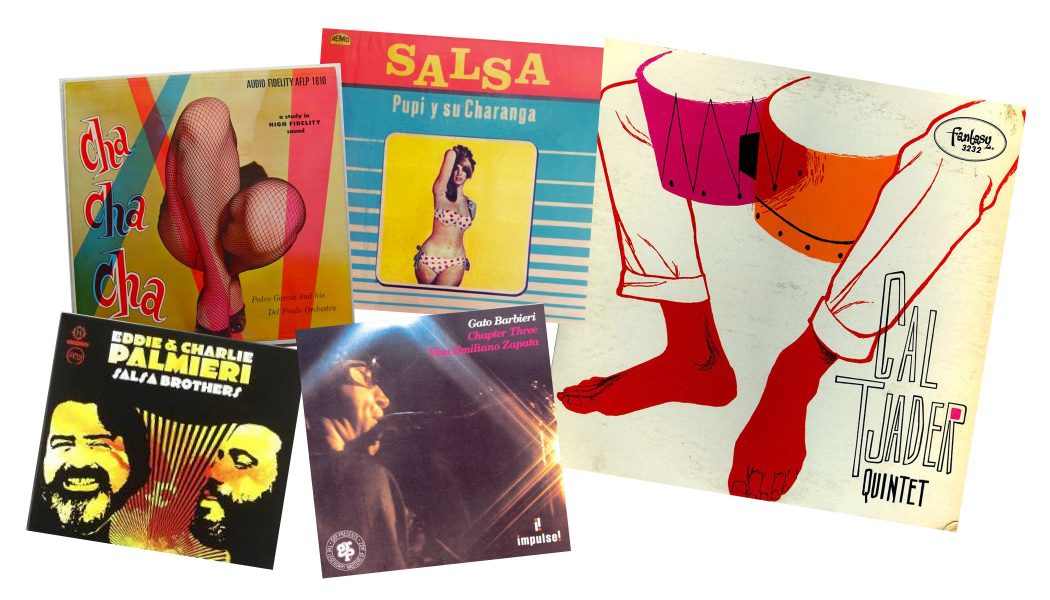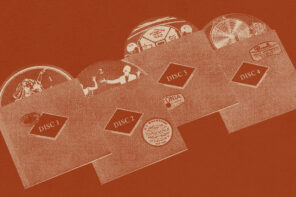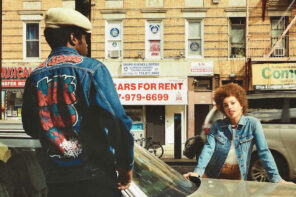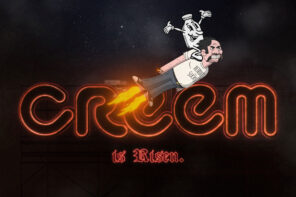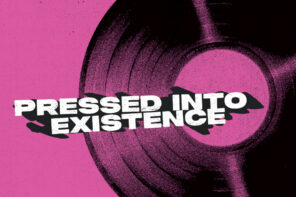A Man Must Dance
“Do you ever listen to latin jazz?”
We were in my parlor together during a Christmas gathering of the kids in my son’s class and their parents. I had just pulled four vintage suitcases from under my piano: they contain my CD collection, and the dads were going through them. Everything’s there. Pretty much. American songbook, blues, bossa nova, classical, country, disco, folk, funk, jam bands, jazz, opera, pop, reggae, rock, singer-songwriters, swing…it’s all in there. More or less. I’ll cue up Tony Bennett with Bootsy Collins and Beres Hammond, and I’ll think nothing of it. But I didn’t have any salsa, and I had to answer honestly.
“No, I don’t,” I said. “I don’t know anything about it.”
“Oh, OK,” Andres replied, and he left it at that.
At the end of the night, we all exchanged cell phone numbers. Then I put away the suitcases. I didn’t know I had started something.
The next morning, I received a text message from Andres saying “Here’s a little latin jazz to start your day with.” Attached to the text was a recording. The header said “Café” by Eddie Palmieri. I had never heard of it, but its title seemed very appropriate for a Sunday morning. I anticipated mellow brunch music, so I clicked. A rhythmic pattern played on piano. Nice. Then a horn section burst forward in syncopation. Wow! And then, men, in harmony, chanting, “Café tostado y colado”
This was NOT brunch music. This was Saturday night music. I loved it. I played it over and over. I sang out loud: “Café tostado y colado.” I even asked my wife, Larysa, to dance with me…and I can’t dance!
“Ok,” she said. “But can you please stop singing that?”
But I couldn’t stop.
I wrote back to Andres that the song was amazing. He wrote back simply, “I know.”
Then I didn’t hear from him for a while. See, he wasn’t going to push or rush. He was subtle. Crafty. Incremental. His plan: step by small step, to take me from dunce to devotee, without me even knowing what he was doing. And he succeeded. Now, whenever I hear a salsa song, I’m grateful. And a lot of times, I even know the song and the artist. When I don’t, I record what I’m hearing with my iPhone, and send it to him with a text saying: “Check THIS out! Quien es este?” Every time, he writes back the song’s name and performer. He’s got a better track record than Shazam—has yet to be stumped, actually. But let’s get back to my “lessons.”
The Booth by the Band
A few weeks later I came home from work on a Friday and my wife said “Dorys called me just now.” That’s Andres’ wife. ”She asked if we wanted to go to Havana Central with them tomorrow night. Andres says there’s live music. He thinks you’ll like it.”
“Sure,” I said. “We love Cuban food, and the music is what it is. Let’s go.”
And so we did. I wore a guayabera shirt for the occasion. I would’ve worn my straw fedora too, but Larysa said it was too much.
“Too much what?” I asked. “Cultural appropriation?” She wouldn’t answer, and she wouldn’t let me wear the hat.
We met Dorys and Andres at the bar, and Andres had on a guayabera shirt too. See: when in Rome…
“We’re waiting for the booth by the band,” they told us. “They need to finish setting up.” Hey, fine by me. We were seated just one Mojito later.
“Too much what?” I asked. “Cultural appropriation?”
After we ordered and had begun to eat (vacas fritas, lectores!), Andres turned and tapped my shoulder to get my attention.
“I think you’re really going to like this band,” he said. “They’re from my home country. Their piano player is amazing. And they sing great harmonies.”
“I’m all ears,” I said.
“Oh, oh.” Andres said a moment later. He was obviously excited. “They’re starting. Shh, ladies, please, please stop talking. I know the first song they do. You want to hear this, believe me.”
The pianist began a typical Latin rhythm and repeated it over and over. As he did, the others joined him. First the conga player, then the other percussionist and finally the bass player. Then the conga player yelled out “SABOR” and the horn players all joined in with bursts and stylized arpeggios. Finally, all the men sang in harmony. I couldn’t understand them.
“What are they saying, Andres?”
“Shing-a-ling.”
“Shingling? Like a roof?”
“That’s funny.” Andres replied. “No, not like putting a roof on. More like blowing the roof off. Listen.”
I did. I heard a fantastic song by Mongo Santamaria.
“I really like that tropical piano,” I said.
“That’s called montuno piano. It’s Afro-Cuban.” Andres instructed.
“I don’t care if it’s from the moon. I love it.”
Andres just laughed.
When the band took 5, Andres and I went over to say hi. It turned out that Andres was from the same town as the singer. He spoke with the musicians in Spanish and they laughed. I couldn’t understand them: they spoke so fast.
“I hear you are learning,” the pianist said to me. “What’s your favorite so far?”
“‘Café.’ Eddie Palmieri.”
“Ooh. That’s a good one,” he said. “It may always be your favorite. But keep listening. There’s so much more.” He started walking away, then turned back to me and said, “I play ‘Café’ for you next set.”
He did exactly that. And many more. I didn’t want to be a pest, so I did not ask Andres to identify every song. But I liked an awful lot of them.
I also did not ask my wife to dance. Because I can’t actually dance. I hated to disappoint her, but I also didn’t want to embarrass her, or myself, in public. Larysa used to salsa dance years ago with some guy named Vinny, and she’s often said how much she loved it. I know she would have loved to dance with me, but I just didn’t know how. So we watched Andres and Dorys dance instead.
After dinner, Andres asked Dorys for her pocket book.
“I have a present for you,” he said. “It’s a thing Geraldo Rivera did on the history of latin jazz. I think you’ll get a lot from it” He handed me a CD.
“Thanks.”
I listened to it obsessively in the car for the next few months, often with the windows open once it warmed up outside. I got surprised looks from people on the street, and parking lot attendants started calling me Papi. I didn’t care: I was indeed learning a lot. For instance, I learned that “Suicide Is Painless,” the theme from M*A*S*H, was first written as a salsa song.
I was also starting to bob my head in bodegas near the courthouses that were playing music. Sometimes when I did, the counter person would say, with a surprised tone, “Ay, papi le gusta la Salsa.” I asked Andres what that meant. He just said they were glad I liked the music, and that I should just answer “Más cada día.” I looked that up: he was right.
“I Know”
One evening, Andres and I were at a particularly rambunctious Cub Scout meeting. The kids were running around like lunatics, and the dad’s had to keep up. When I arrived home, I told my wife “I’m shot”, and I hit the couch.
Moments later, my phone pinged. Someone was texting me.
“You two need this,” it said. It was from Andres. Attached was Gato Barbieri’s “She Is Michelle.” I clicked. A soft Spanish guitar played. A deep, smoky sax began to moan over it. Then the percussion and bass joined in. Ahh. I listened, got off the couch and began to sway. The tune both calmed and excited me. I invited my wife to join me, and she did. A nice, close dance. Our son didn’t even interrupt. Then I wrote Andres
“That song just begs to be slow danced to.“
He wrote back simply, “I know.”
I was really getting into salsa. I was annoying my friends by stopping on street corners and in restaurants saying:
“Do you hear that? That’s Tito Puente. Let’s Cha-Cha. Ahhh.”
“Listen…is that amazing? That’s Cal Tjder.”
“Oh. Ohhh! Ray Barretto, El Diablo! Oh! Oh!”
No one else was getting excited. Then, I was in Rhinebeck with friends when Besame Mama by Poncho Sanchez came on in a shop. I threatened to dance, ignoring the fact that I can’t. My wife stopped me, but no
one stopped listening.
“What was that?” my friends asked.
“That’s one of my very favorites,” I said, and I promptly identified the song and artist. As I did, my friend Bob made a note of it on his iPhone. “A breakthrough,” I thought. “Soon, it won’t be just me.” And I was right.
Later that afternoon, we were all having ice cream when Bob turned to me and asked, “You hear that?”
“Yeah. That’s pretty good. I don’t know it. Hold on.” I held up my phone, recorded it and sent it to Andres.
He texted right back. “‘Cuando Se Acabara’ by Manny Oquendo.” He attached a photo and recording.
“That’s amazing,” Bob said.
“Yeah! And there are a lot of songs like that.“
“No. Well, I’m sure there are. But I mean your ‘master’ there. I’ve seen you guys do this before. He seems to know every song, just like that!” He snapped his fingers.
“I know. It IS amazing.”
“What a resource.”
That’s when I realized that I had been a not-so-young apprentice for many months. All those texts of songs had a purpose. I was being schooled. But for what?
That Christmas, Andres was over with Dorys again. And he brought a CD by Rene Touzet, who he explained was a legendary Cuban pianist. We played it, and I noted how gentle and rhythmic it was.
“I know,” he said. “I choose this for you to take the next step. You’re ready.”
“What?”
“My work is done, my friend. Now you must learn to dance.”
As he said that, I looked at Larysa. I saw hope in her eyes.
“I leave that to you and your lovely wife.”
“Yeah.” I said. “I can’t dance.”
“You knew nothing of latin jazz. And now you do. See? A man must dance. You will.”
I noticed that as we spoke, my hips were swaying. Then my feet began to move.
“Smaller steps,” Andres instructed.

